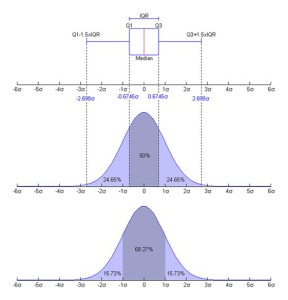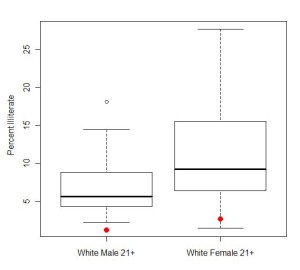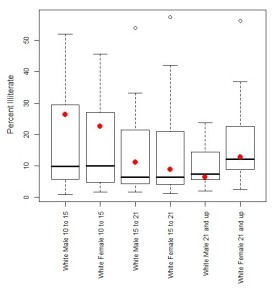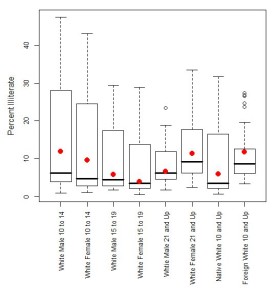Related Posts: Utah Polygamy and Divorce – 1880 to 1930; Divorce in 1890 Utah: Signs of Polygamy; Marriage in 1890 Utah: Very Normal; Utah’s Teachers and Students, 1870 to 1899;
Polygamy versus democracy
The June 5, 2006 issue of the Weekly Standard has an article written by Stanley Kurtz titled “Polygamy Versus Democracy: you can’t have both.” (Kurtz is an adjunct fellow of the Hudson Institute, Senior Fellow at the Ethics and Public Policy Center, and has written for National Review Online, Weekly Standard, Policy Review, The Wall Street Journal, and Commentary.) His general thesis is polygamy, or more broadly polyamorous unions, as well as gay marriage are antithetical to democratic values. He writes, “American democracy rests upon specific family structures.” In his article he outlines what he believes is a relationship between polygamy and tyranny, and a large section of his article is dedicated to an analysis of 19th century Mormon polygamy—The Mormon church officially discontinued the practice of polygamy in 1890. Under the section titled “The Mormon Question” he draws parallels between the United States Government’s struggle to stamp out Mormon polygamy and the current war on terror. “In effect, the fight against polygamy was a slow, frustrating, expensive, ultimately successful campaign to democratize Utah. (The parallels to the war on terror are eerie)” (parenthesis original). Writing that “the Mormons renounced polygamy and set themselves on the path to democracy.”
Being a devout Mormon that naturally ticked me off. But for this post I shall focus on only one sentence from his article.
Religious leaders schooled their families privately, while most of the territory’s children remained illiterate.
What does the data say?
Because I am a mega-nerd, and because I was so irritated by Kurtz’s article, I spent the last year collecting education data for every US state and territory for every year from 1870 to 1899 from the annual reports of the United States Commissioner of Education (COE reports), as well as illiteracy rates for every state and territory in the US from the 1860, 1870, 1880, 1890, and 1900 census. Education statistics from the 19th century can be tricky. And I nearly have my database in a usable format. Some of the results are rather embarrassing for Utah, but most are ordinary or nearly so. But I’ll save that for later posts. One metric that is fairly objective is the illiteracy rates, reported in the census. The census divides the data into age groups, race, sex, and parentage. You can find the census data for the years I cover (here) at the US Census Bureau. The earlier census’ have less detail; the 1900 census has the most.
I shall compare the illiterate white population of the states of the United States with the illiterate white population of Utah.
You will find Kurtz’s assertion that “most of the territory’s children remained illiterate” is patently false. But how did it originate?
The Mormon Question
In Kurtz’s polygamy vs democracy article he mentions a book written by Sara Barringer Gordon, The Mormon Question, which apparently was an important source of information.[1] In Gordon’s book she mentions many of the issues surrounding Utah common schools during the polygamy years. Here are two quotes.
Indeed, the majority of Mormon children did not attend school until the 1890’s (p. 198)
Local schools, although they did exist in many communities by the 1880’s, generally were privately financed, and understaffed (p. 199)
Based on my own research I do find fault with what the first quote asserts. The second quote is partially correct. According to my data, from 1870 to 1899 the enrollment rates for Utah common schools were never below 50%.
From the 1890-91 COE report the average enrollment in Utah common schools was 65%. Rather low, but considering the average for the US was 68% it’s not too bad. However, even with this low number Utah had higher enrollments than the common schools of Texas, Idaho, New Jersey, District of Columbia, Maryland, Wyoming, Rhode Island, Virginia, Georgia, North Carolina, Alabama, Arkansas, Arizona, New Mexico, South Carolina, and Louisiana. I don’t have private school enrollment data for 1890 Utah.[2]
For 1889-90 school year I calculated common school enrollment as a percentage of the 1890 school age population because the school age populations were not listed in the ‘88-89 COE report (so the percentages will be different). The average common school enrollment for Utah was about 52% compared to a value of 68% for the US. However, when private and common school enrollments are considered the overall enrollment for Utah school children becomes 66%, which compares more favorably to the US value of 76% for common and private enrollment. Indeed the 1888-90 COE report indicates 20.94% of Utah’s school age population were enrolled in private schools—The next highest percentage was New Jersey at 16.81%. The private school enrollment for the Western Division was around 8%, Utah omitted.[3]
In 1880 common school enrollment for Utah was 51%, and 65% for the US. In 1870 Utah was at 50% and the US 56%.[4]
I’ll eventually do a post on how Utah compares to other states in enrollment and attendance, and other stats, but for now this will have to do.
Stanley Ivins
Gordon references a paper by sociologist Stanley Ivins, “Free Schools Come to Utah,” published in the Utah Historical Quarterly.[5] In it Ivins lists some school statistics. For example,
By 1866 attendance had increased to 40%, and by 1876 to 44%. In the early eighties it began to drop, and by 1889, was down to 36%…for the years between 1862 and 1890, average attendance per school throughout the territory, was 44%.
Note that Ivins lists only percent attendance, not enrollment. Ivins failed to list average US attendance, or any other like comparisons. I calculated from the COE reports and census data the average daily attendance for the United States as a percentage of the 5 to18 school age population: 41% in 1870; 42% in 1880; 44% in 1890; and 47% in 1899.[6] (Note: these are for public schools only.) Ivins does not factor for private school attendance. From the 1860 Census, 58% of Utah’s white student age population attended school during the year; for the United States it was 60% of the white school age population. (The 1860 Census data seems to be if a student attended school he or she was counted.[7] So this is probably not average daily attendance.)
What does it mean to be ordinary

My contention is that Utah illiteracy rates for 1860, 70, 80, 90, and 1900 are “ordinary.” So what do I mean by ordinary? Any data point between Q1 and Q3. That is, between the 25th and 75th percentile, in the middle 50% of the data. This is tighter than a standard deviation, which covers about 68% of a normal distribution. If a data point is between Q1 and Q3, as far as I am concerned it qualifies as ordinary.
[color-box]
Key
The plots below show how US illiteracy rates for each state and territory compared to that of Utah. The data comes from the 1860 to 1900 Census Reports. Because Utah was overwhelmingly white I consider only the white population of Utah and the US. [/color-box]
1860 Census
 (Red dot indicates Utah)
(Red dot indicates Utah)
(Better than ordinary)
In 1860 the median illiteracy rate for the United States was 5.6% for males and 9.2% for females. For Utah it was 1.2% for males and 2.7% for females.
1870 Census
 (Utah is well within ordinary.)
(Utah is well within ordinary.)
1880 Census
 (Utah is very ordinary for each sex and for every age group.)
(Utah is very ordinary for each sex and for every age group.)
1890 Census
(Except for one data point everything is ordinary for Utah.)
The year 1890 is important because it is the year the announcement Mormons refer to as “the Manifesto” was given. The Manifesto was a public declaration that the Mormon Church has discontinued the practice of polygamy. It is included in our scriptures as Official Declaration-1.
Key
Green: Native white population of native parents.
Blue: Native white population of foreign parents.
Purple: Foreign white population.
Examples
Native White (NP) 10-14 M = Native white population of native parents, ages 10 to 14 Males.
Native White (FP) 10-14 F = Native white population of foreign parents, ages 10 to 14 Females.
Foreign White 10 to 14 M = Foreign born white population, ages 10 to 14 Males.
1900 Census

(As you can see, Utah is doing pretty well!)
Key
Green: Native white population of native parents.
Blue: Native white population of foreign parents.
Purple: Foreign white population.
Examples
Native White (NP) 10-14 M = Native white population of native parents, ages 10 to 14 Males.
Native White (FP) 10-14 F = Native white population of foreign parents, ages 10 to 14 Females.
Foreign White 10 to 14 M = Foreign born white population, ages 10 to 14 Males.
End Notes____________________________
[1] For book reviews of The Mormon Question from LDS perspectives see Terryl L. Givens (here) and Nathan B. Oman (here) in BYU Studies, and Kathleen Flake (here) in Dialogue.
[2] Percentage of the 5 to 18 school age population. School age population from 1890-91 COE report.
[3] Percentage of the 5 to 18 school age population. School age population from 1890-91 COE report. For 1889-90 I calculated common school enrollment as a percent of the 1890 school age population because the school age populations were not listed in the ‘88-89 COE report, so the percentages will be different.
[4] Percentage of the 5 to 18 school age population. School age population from 1880 and 1870 US Census.
[5] Ivins, S.S., Free Schools Come to Utah, Utah Historical Quarterly, vol. 22, No. 4, p. 321, 1954.
[6] 1870 and 1880 school age populations from US Census.
[7] From the 1860 Census, “The average number of pupils attending school during the year amounted to nearly one in six for the entire population, and to almost one in five for the free white inhabitants of the Union.”
